N.C. WYETH (1882-1945)
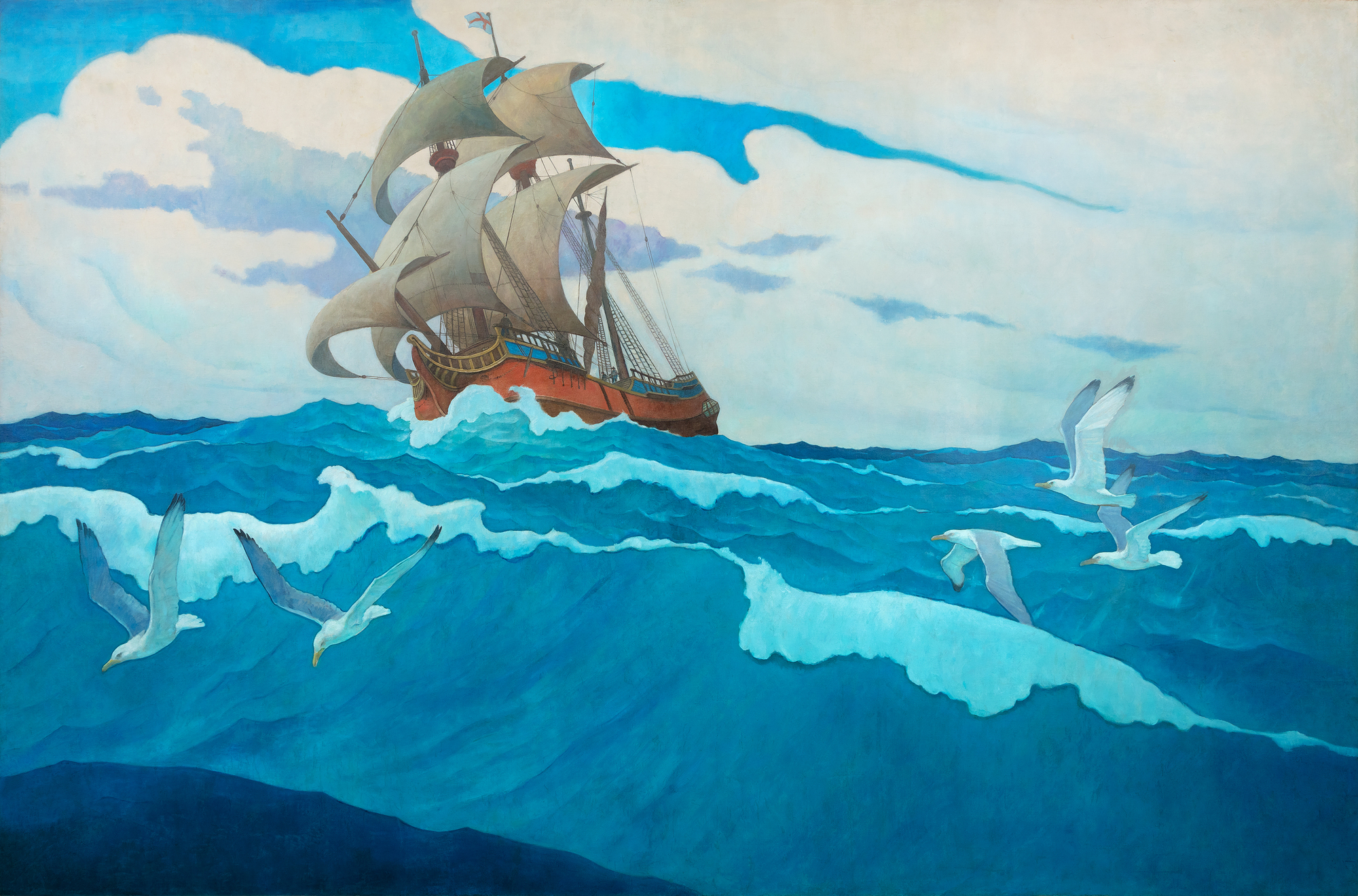
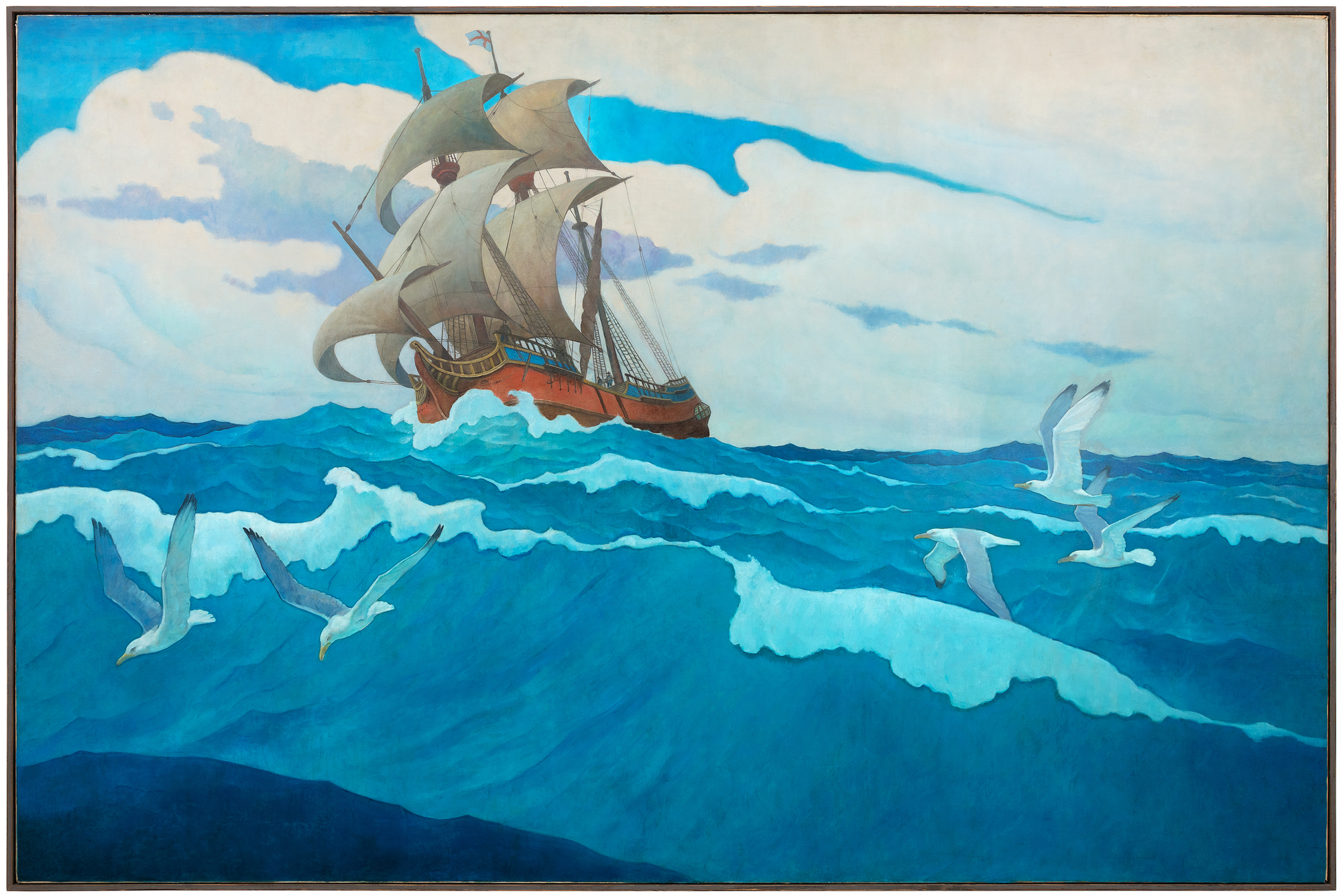
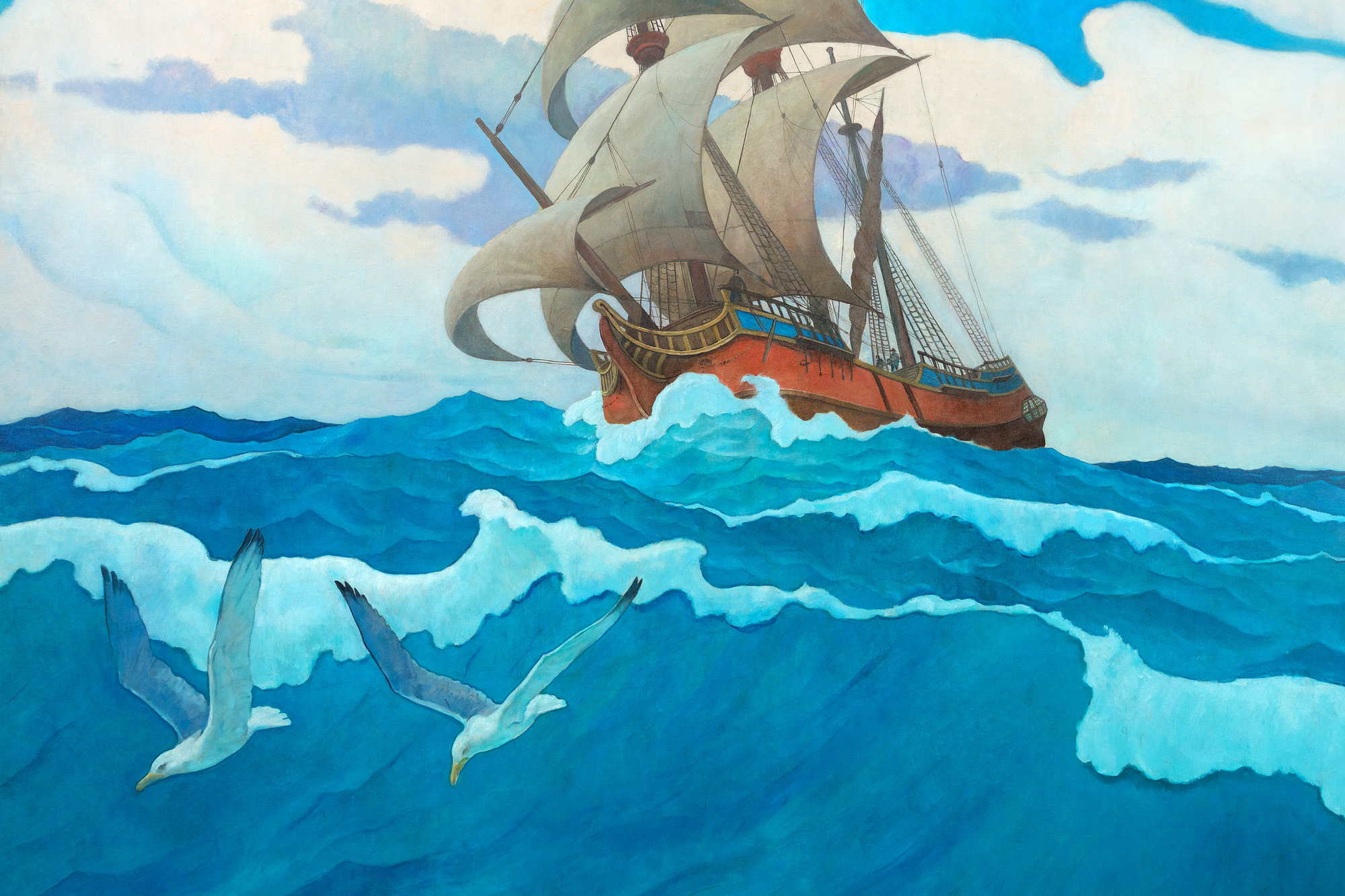
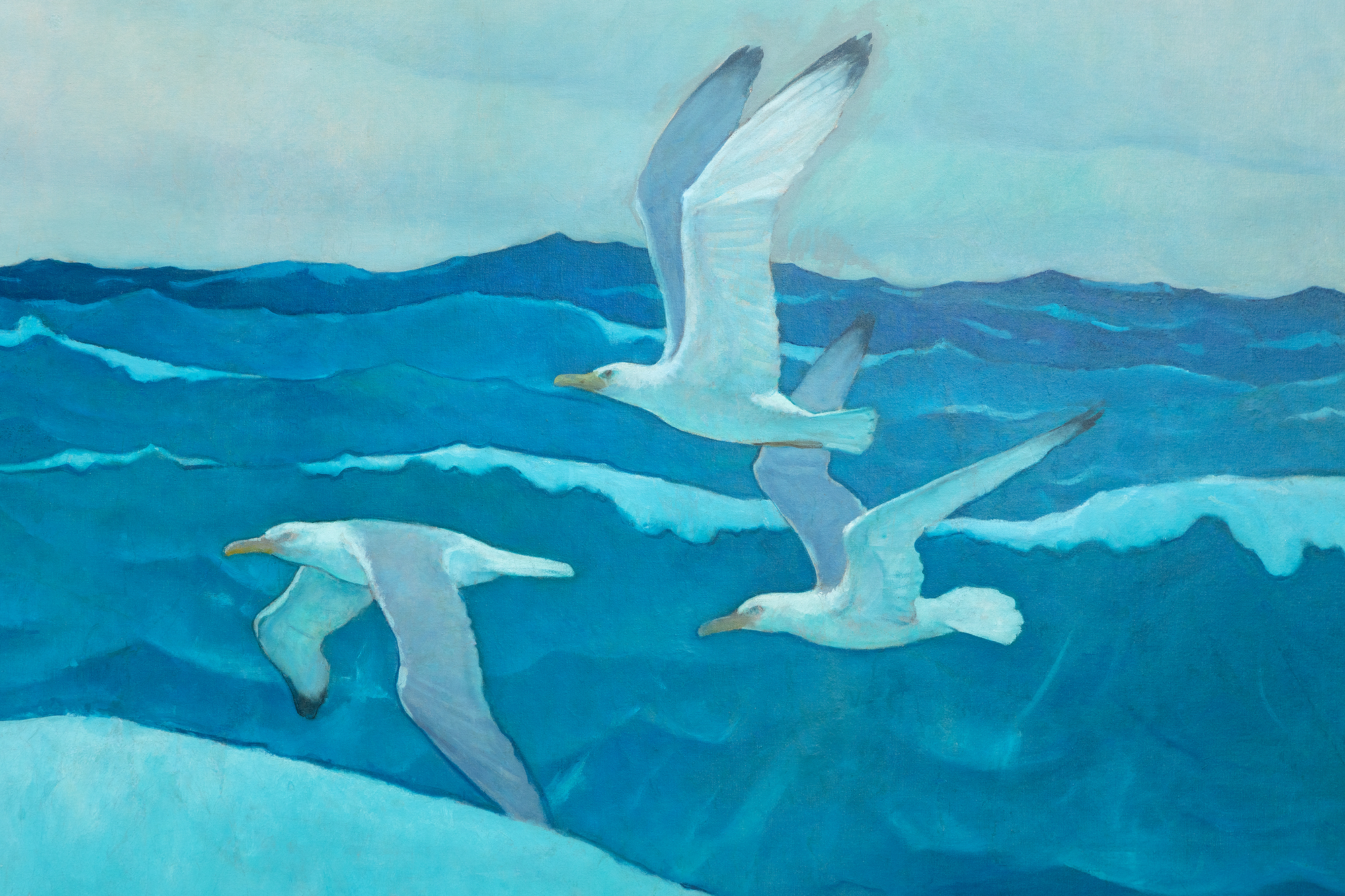
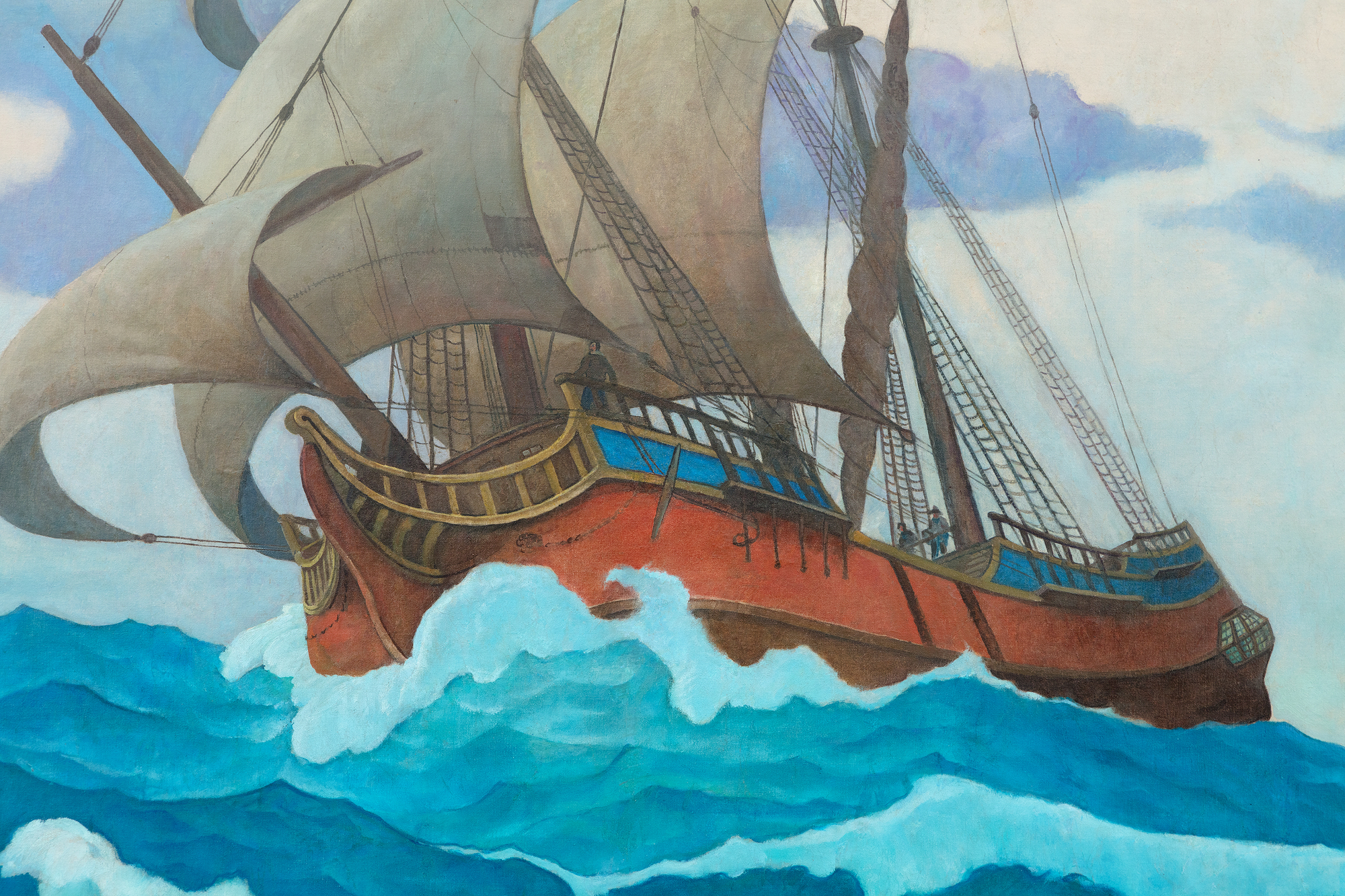
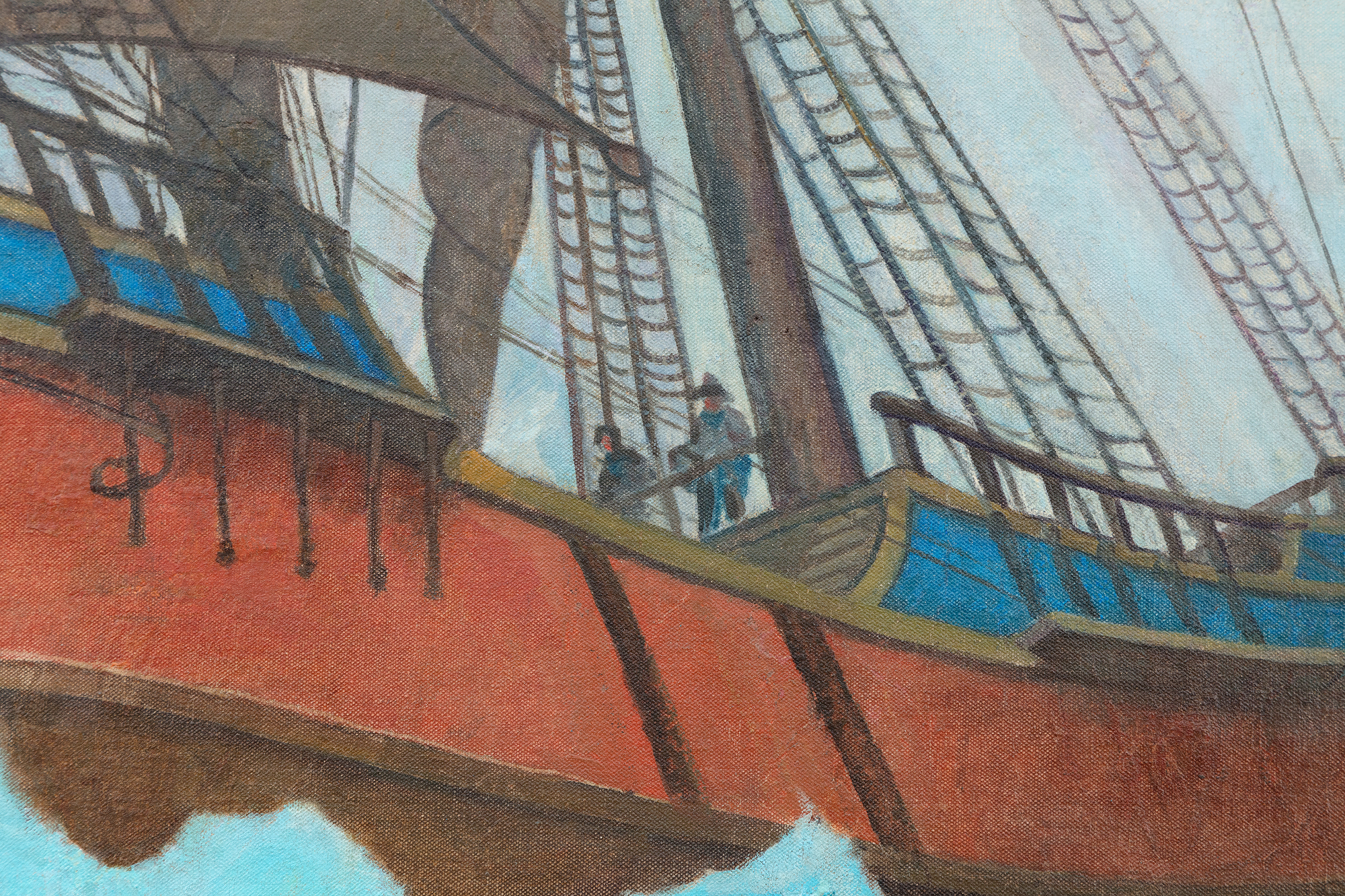
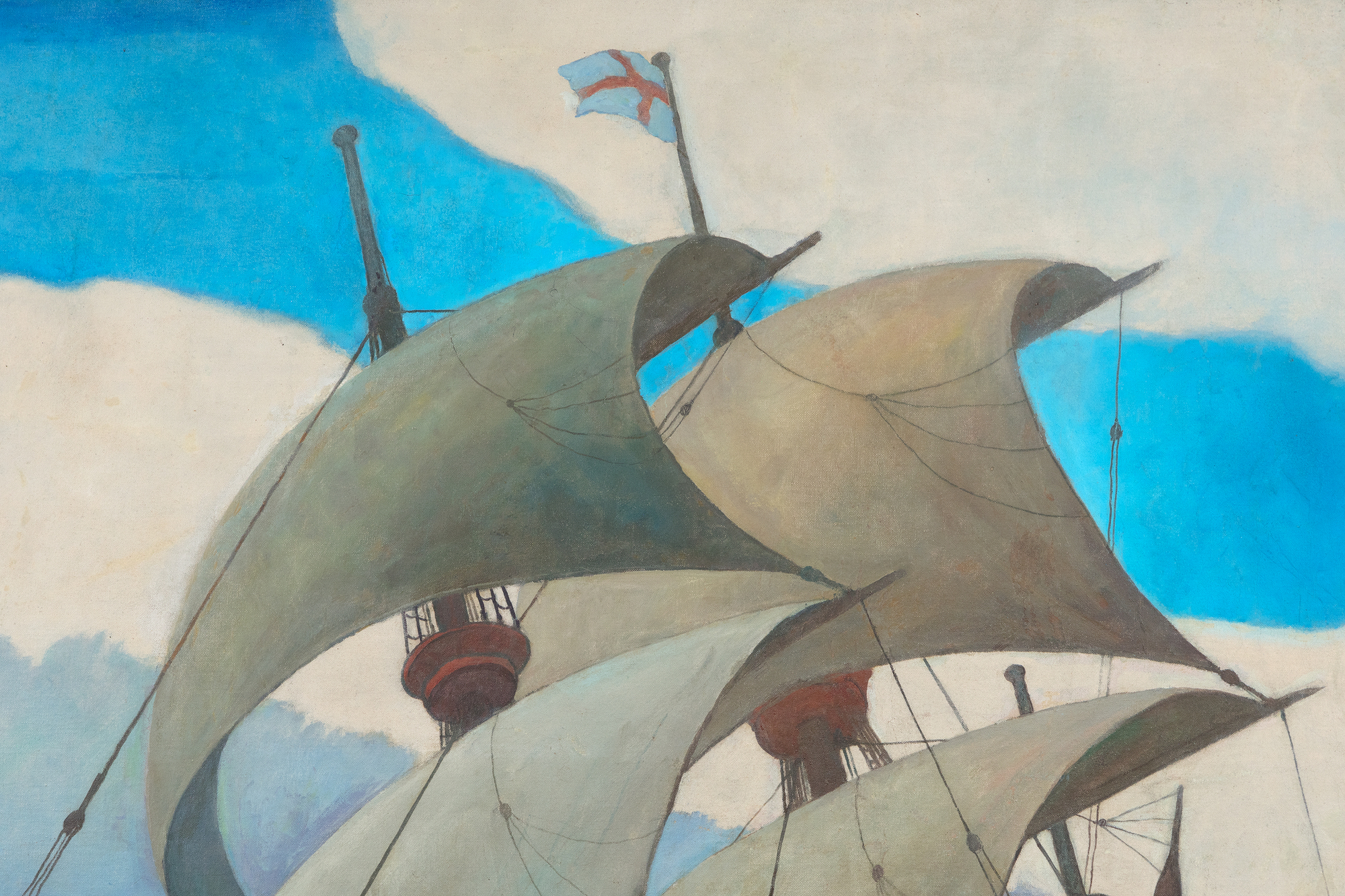
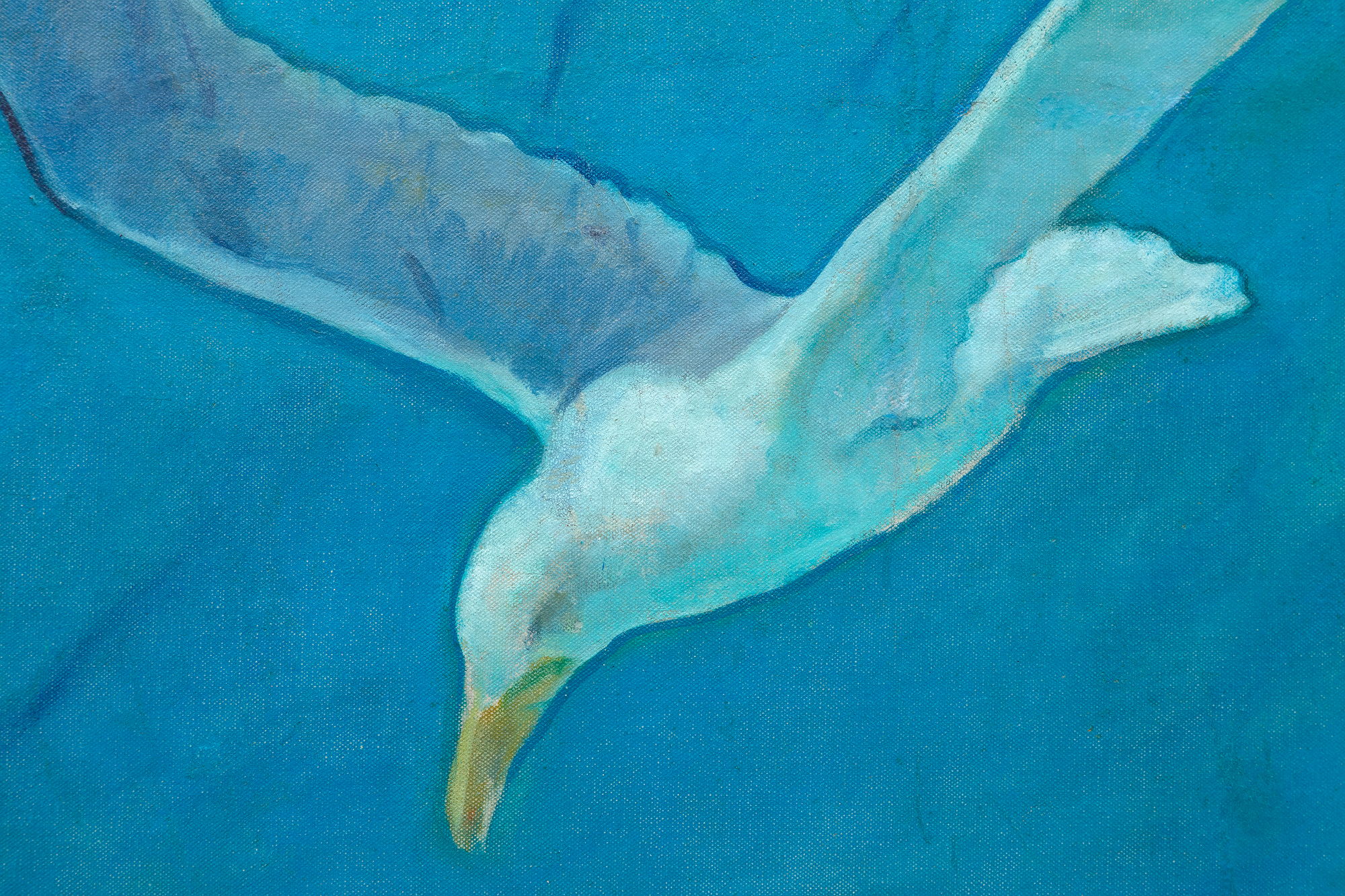
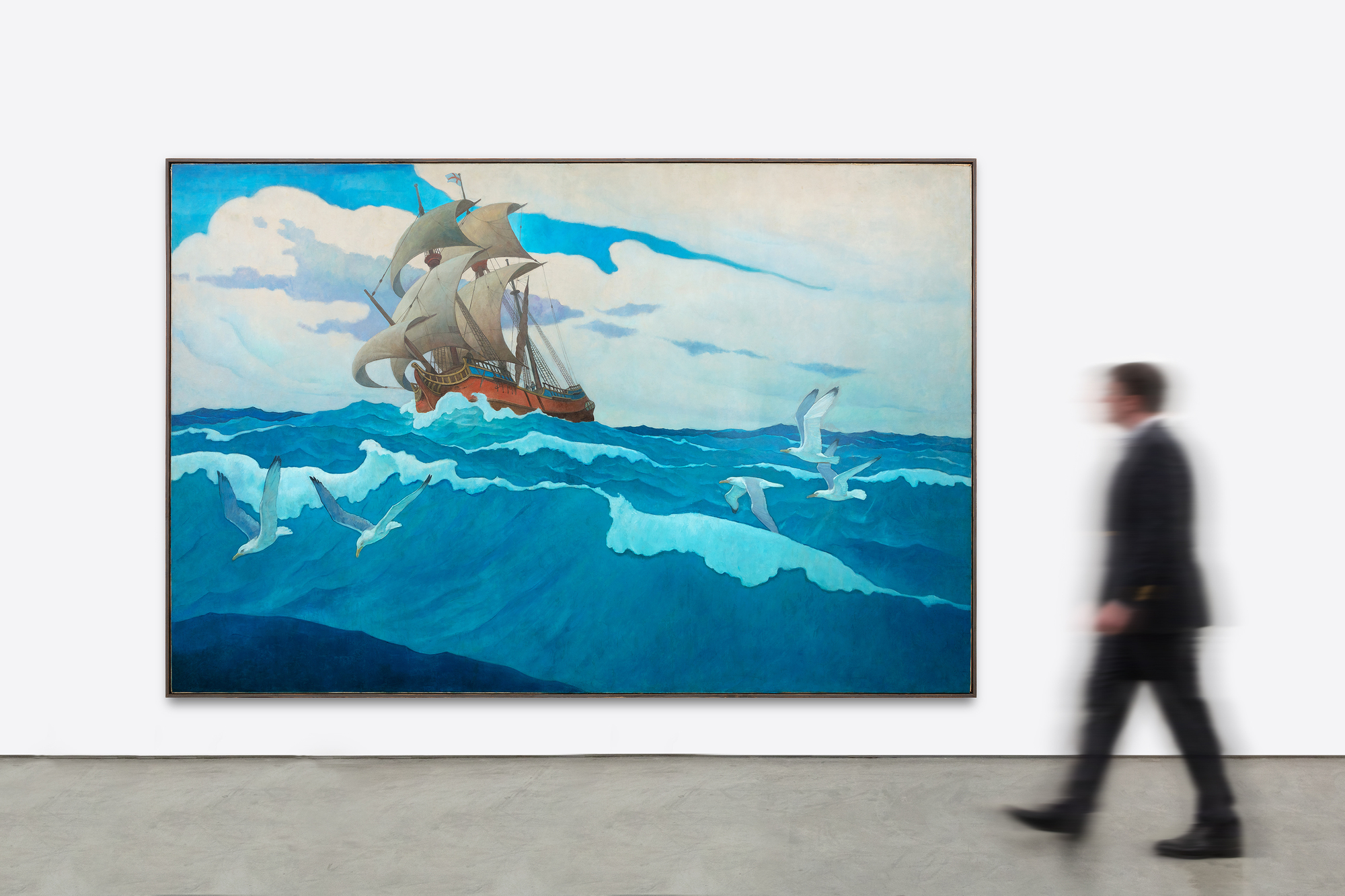
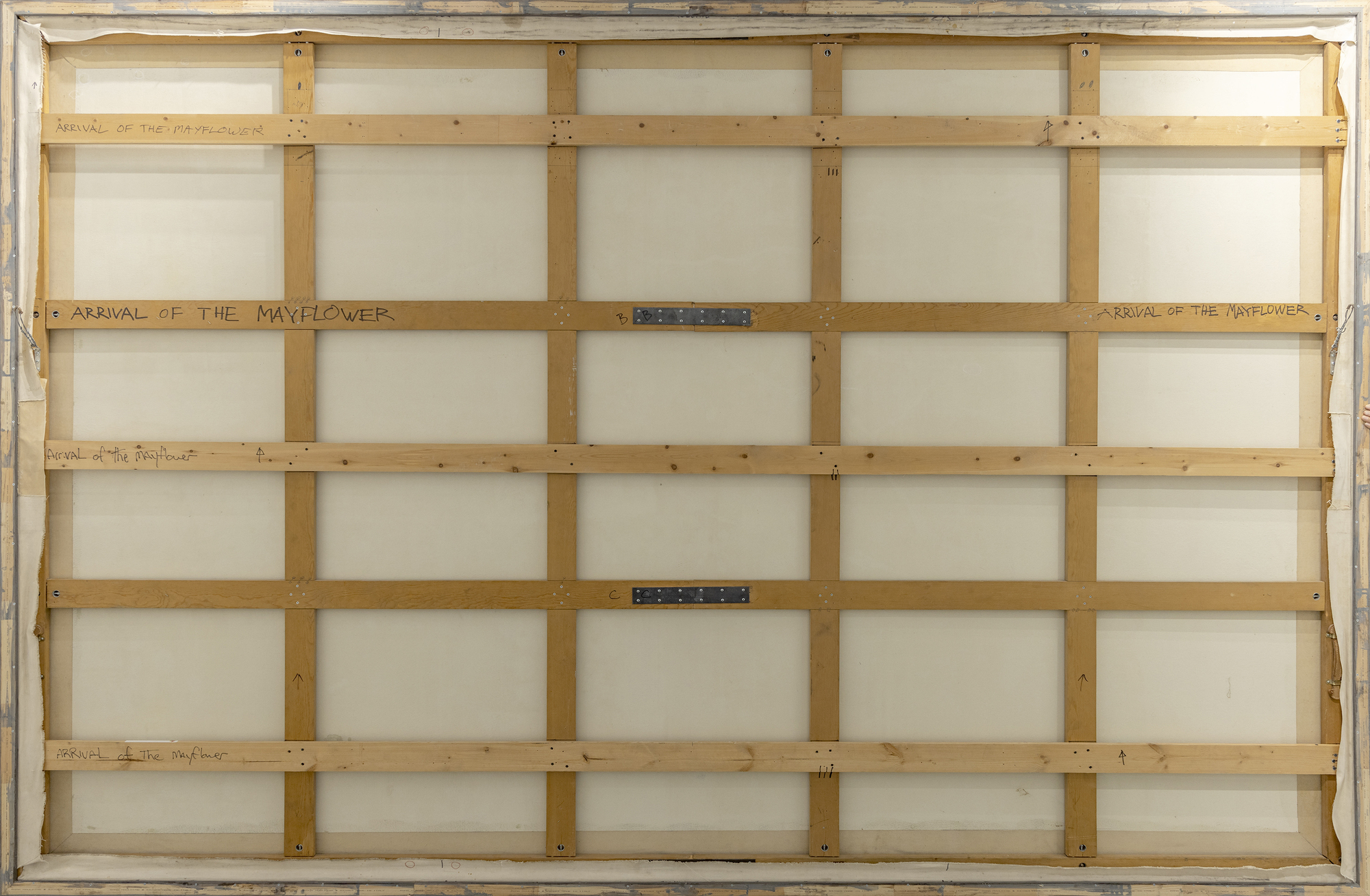
الاصل
MetLife, Inc. مجموعة الشركات (بتكليف من مكاتب نيويورك)هيذر جيمس للفنون الجميلة ، نيويورك
معرض
نيويورك، نيويورك، 1985، العدد 13، "مجيء ماي فلاور"الادب
"أيام الحجاج يعيشون مرة أخرى في جدارياتنا" ، وزارة الداخلية (منشور شركة متروبوليتان للتأمين على الحياة) ، المجلد 23. العدد 7 (كانون الأول/ديسمبر 1941)N. C. Wyeth ، ملاحظات ضريبة الدخل لعام 1941 (غير منشورة ، مكتبة متحف نهر برانديواين)
دوغلاس ألين ودوغلاس ألين جونيور ، ن. س. وايث ، اللوحات المجمعة والرسوم التوضيحية والجداريات (نيويورك: كراون للنشر ، 1972) ،... اكثر... ص 169-172، وضح ب/ث ص 169.
روبرت سان سوسي ، N. C. Wyeth's Pilgrims (سان فرانسيسكو ، كاليفورنيا: Chronicle Books ، 1991) ، تفاصيل توضيحية. على الواجهة الأمامية
كريستين ب. بودمانيتشكي ، ن. س. وايث ، كتالوج رايسونيه من اللوحات (لندن: سكالا ، 2008) ، M.67 ، ص 629
... اقل...
حول مجيء ماي فلاور في عام 1620
كانت مهارات N.C. Wyeth الاستثنائية كرسام نابعة من الصياغة التي لا تشوبها شائبة وكرسام ، وإحساسه الغني والمتناغم بالألوان ، والقدرة على التقاط جودة الضوء نفسه. ولكن فنه الذي لا مثيل له في إحياء القصة والشخصية بإحساس قوي بالمزاج هو ما يعجبنا أكثر من أي شيء آخر - القدرة على نقل نفسه إلى العالم ووقت خلقه ونقله بإحساس خادع بالاقتناع. وتتضح هذه القدرة في التعقيدات التركيبية لكتاب جزيرة الكنز "خطوة أخرى يا سيد الأيدي!" كما هو الحال هنا، في السرد الموجز لسفينة تجارية مربعة من القرن السابع عشر تم قذفها في البحار. إن فيلم The Coming of the Mayflower في عام 1620 هو بيان بسيط للحقائق التي يمكن ملاحظتها ، ومع ذلك فإن عبقرية وايث التي لا تشوبها شائبة كرسام تشبعها بالهواء المالح والذوق الذي يلتقط روح المغامرة للرجال والنساء الذين ينسب إليهم الفضل إلى حد كبير في تأسيس أمريكا. يتم حمل هذه الروح على الريح والأشرعة المشدودة ، والكعب الرقيق للسفينة عند أنف عاصفة قاسية ، والسحب الدافعة ، والسحب المتدفقة ، والنوارس التي تم ترتيبها بسخرية للاحتفال بالوصول لأنها ملائكة العناية الإلهية ذات الريش التي تقودها إلى الملاذ الآمن.
استند مجيء ماي فلاور في عام 1620 إلى دراستين ، رسم تكوين في الجرافيت ولوحة عرض تقديمي صغيرة. يبدو أن الجدارية النهائية قد تم تركيبها في عام 1941.
التاريخ
قبل أن يكون هناك تلفزيون وفي وقت كان فيه الفيلم لا يزال في مهده ، كانت الرسوم التوضيحية ل N. C. Wyeth كهربة القصص التي شكلها بصريا وشرحها. كقارئ شاب ل "جزيرة الكنز" ، من يستطيع أن ينكر الحاجة الملحة للقراءة في الرسم التوضيحي اللامع التالي؟ أو ، في ترقب متحمس ، الإبهام من خلال الصفحات مرارا وتكرارا إلى الصور المقبلة ، حية جدا وحية ومليئة بالتبجح؟
في عام 1939 ، عرضت شركة Metropolitan Life Company على Wyeth عمولة من نوع مختلف. سلسلة من الجداريات القماشية التي من شأنها أن تعتمد بشكل أقل على التبجح ، ربما ، ولكن بدلا من ذلك ، على إحساس عميق بالزمان والمكان. سيقدمون رؤية حيوية وعظيمة ويعبرون عن روح الفخر الوطني من خلال الاحتفال بالقيم القوية التي تعبر عما يعنيه أن تكون أمريكيا. كان وايث سعيدا. من شأن الألواح الجدارية الأربعة عشر التي وافق على إنتاجها أن تجلب عالم الحجاج إلى الحياة المتوهجة و "بمثابة تعبير بياني ودرامي عن روح نيو إنجلاند" (دوغلاس ألين ، وآخرون ، N. C. Wyeth: The Collection Paintings ، Illustrations ، and Murals ، pg. 169). وايث، وهو فنان ذو مهارة لا مثيل لها واستثمر بشكل كامل في أصالة الشخصيات التي تملأ رواياته، استمتع بفرصة التعبير عن الفخر الذي شعر به تجاه ماضي أجداده.
"كانت رومانسية الاستعمار المبكر ، وخاصة رومانسية الحجاج في ماساتشوستس ، تثيرني دائما. جاء سلفي نيكولاس وايث من ويلز إلى ماساتشوستس في عام 1647. كانت روح الأيام الأولى على ساحل ماساتشوستس موضوعا نوقش كثيرا في منزلي. ولدت في نيدهام ، وليس بعيدا عن مدينة بليموث ، التي قمت بالعديد من رحلات الحج إليها خلال فترة صبتي ، وأقضي أياما مثيرة في تلك المنطقة التاريخية وحولها. مع هذا كخلفية ، كان من الطبيعي أن يطير في ذهني وقلبي إلى بليموث وإلى الحجاج كموضوع مناسب لسلسلة من لوحات نيو إنجلاند. إذا كان دفء هذه اللوحات وجاذبيتها واضحين لأولئك الذين يدرسونها ، فذلك يرجع أساسا إلى أنها ، بطريقة ذات صلة ، بيان لحياتي وتراثي ". (دوغلاس ألين ، وآخرون ، ن.C. وايث: اللوحات المجمعة والرسوم التوضيحية والجداريات ، ص 171)
اكثررؤى السوق
- يظهر الرسم البياني الذي أعدته Art Market Research أن لوحات NC Wyeth قد زادت بمعدل نمو سنوي مركب بنسبة 11٪ منذ عام 1976.
تم تحديد السعر القياسي ل NC Wyeth في المزاد في عام 2018 عندما بيعت لوحة Portrait of a Farmer ، وهي لوحة أصغر من عام 1943 ، مقابل ما يقرب من 6 ملايين دولار.
- لم تظهر أي لوحات NC Wyeth على أنها ضخمة الحجم في المزاد.
أفضل النتائج بالنسبة ل N.C. Wyeth at Auction

"صورة مزارع (مزارع بنسلفانيا)" (1943) بيعت مقابل 5,985,900 دولار أمريكي.

بيع فيلم "Hands Up" (1906) مقابل 4,951,500 دولار أمريكي.

تم بيع "نداء الحب الهندي" (1927) مقابل 3,510,000 دولار أمريكي.
لوحات N.C. Wyeth في مجموعات المتحف
متحف متروبوليتان للفنون، نيويورك
متحف فيلادلفيا للفنون ، بنسلفانيا
متحف نهر براندي واين للفنون ، شادس فورد ، بنسلفانيا
متحف بيبودي إسيكس ، سالم ، ماساتشوستس
متحف جيلكرايس ، تولسا ، أوكلاهوما
معرض الصور
موارد إضافية
"أبي" لأندرو وايث
ذا إن .C وايث هاوس آند ستوديو
رسم التكوين
الاستفسار
قد تحب أيضا























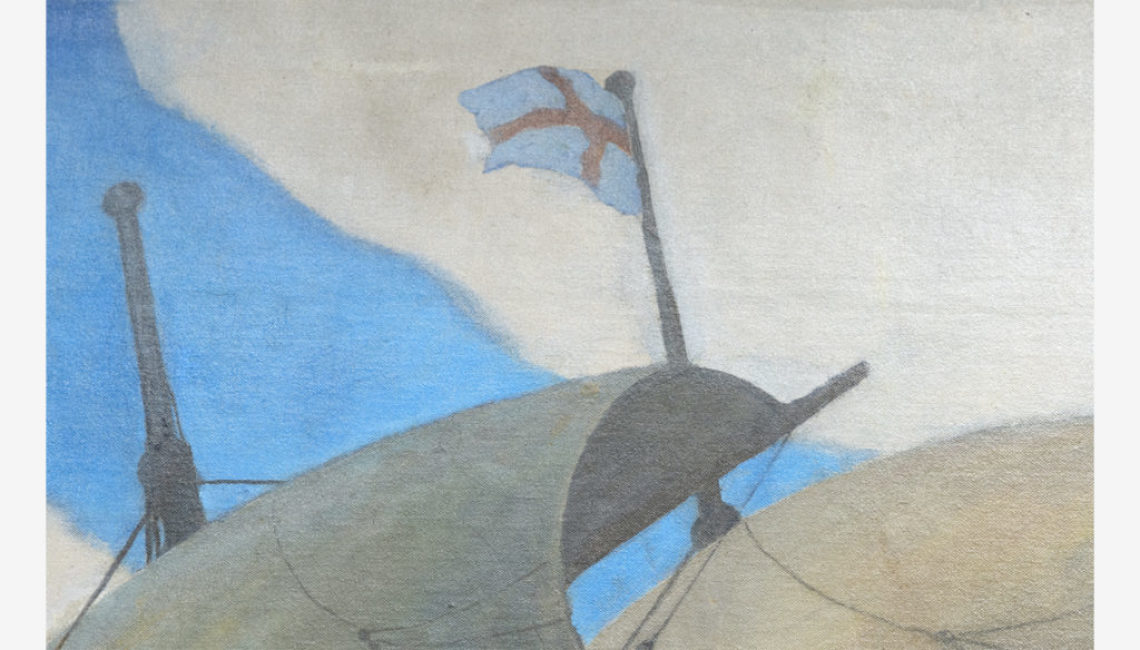




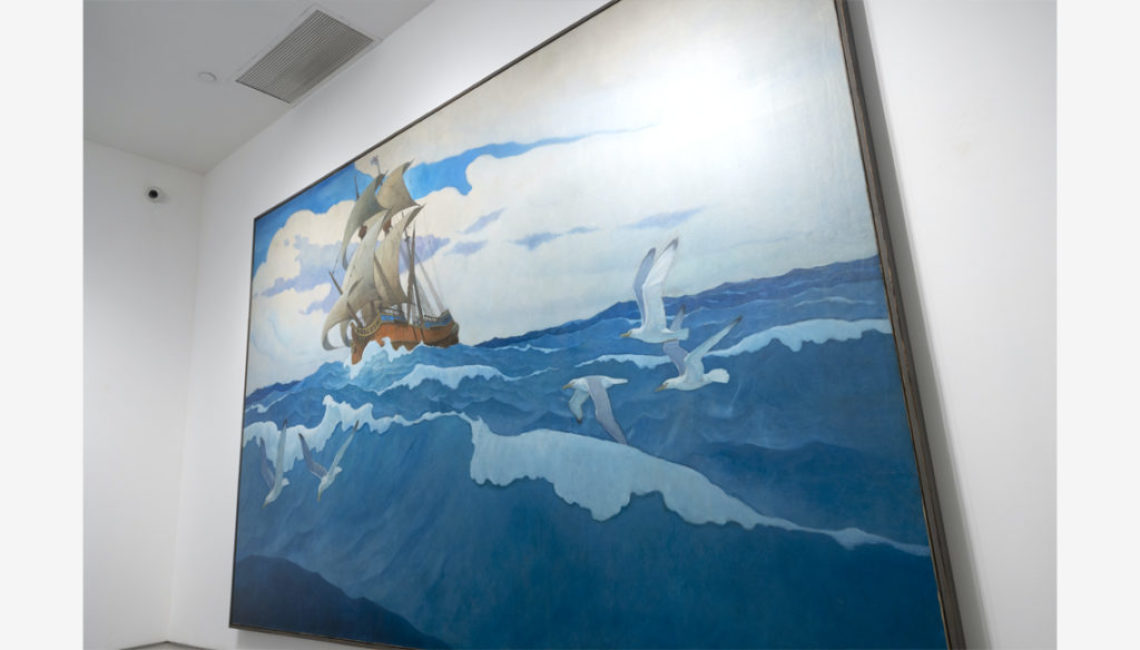

















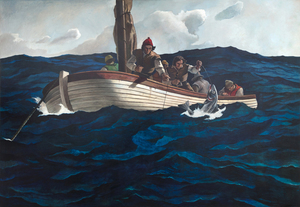
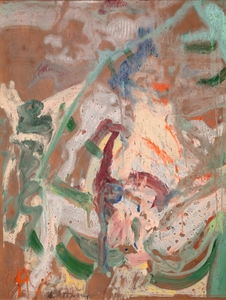
_tn28438.jpg )
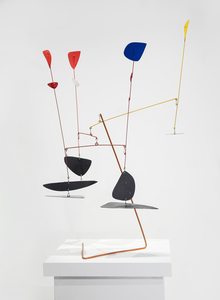
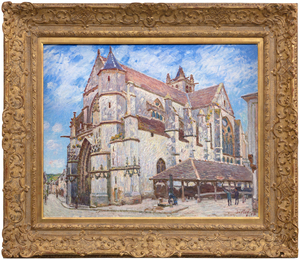
_tn45742.jpg )
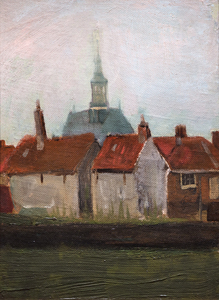
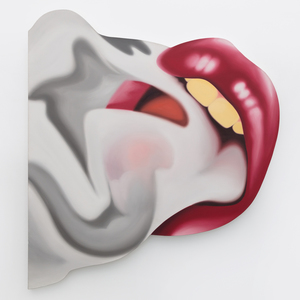
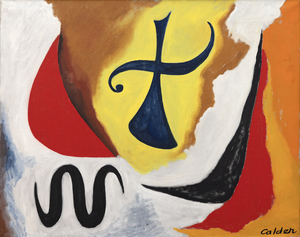
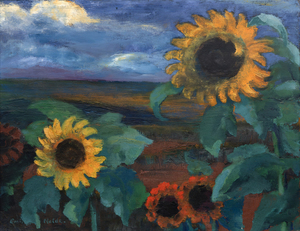

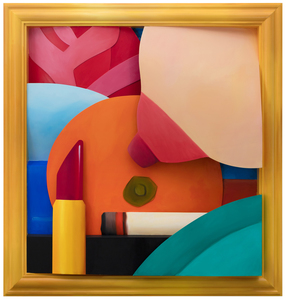
_tn45731.jpg )
_tn45734.jpg )
_tn43950.jpg )
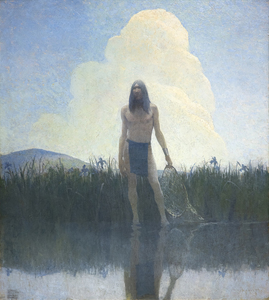
_tn45741.jpg )
_tn45739.b.jpg )
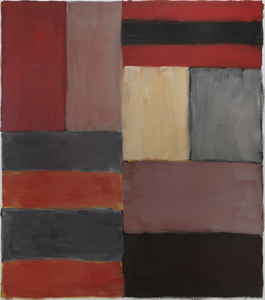
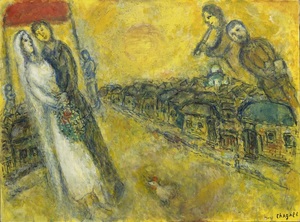
_tn45733.jpg )
_tn40169.jpg )
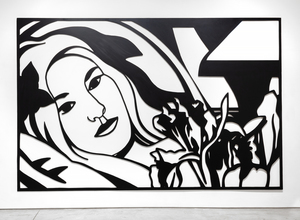
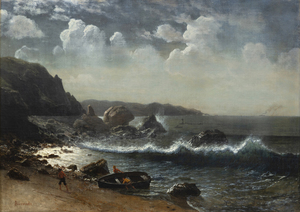
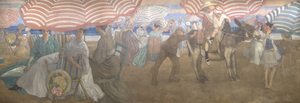
![SIR WINSTON CHURCHILL-View of Loch Choire (C 51) Painted while staying at Dunrobin Castle, the estate of the Duke of Sutherland, Churchill chose to set his easel behind a tree where he likely thought of it as a framing device, adding a layer of depth, creating a stronger sense of foreground, middle ground, and background, enhancing the three-dimensionality of the picture. Churchill painted at both Dunrobin as well as the Duke’s Sutton Place estate, later the home of John Paul Getty.<br><br>As Mary Soames describes it in her book, Winston Churchill, His Life as a Painter, “1921 had been a year of heavy personal tidings” for Churchill and his family, as he lost both his mother, Jennie Cornwallis-West, and his beloved child, Marigold, aged nearly four. In a letter to his wife Clementine, Churchill wrote, “… Many tender thoughts, my darling one of you and yr sweet kittens. Alas I keep on feeling the hurt of the Duckadilly [Marigold’s pet name].” That Churchill chose to stay with the Duke and Duchess at Dunrobin just after Marigold’s death speaks to their close friendship and his fondness for the area, including Loch Choire. It is no surprise that Churchill gifted the painting to the Duke of Sutherland](/Art_Images/Small/sir_winston_churchill_view_of_loch_choire_(c_51)_tn45743.jpg )
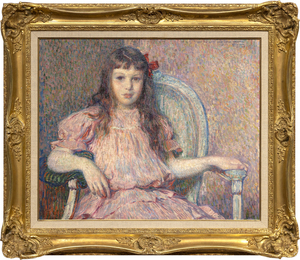
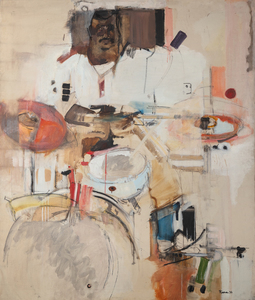
_tn45732.jpg )
_tn27035.jpg )